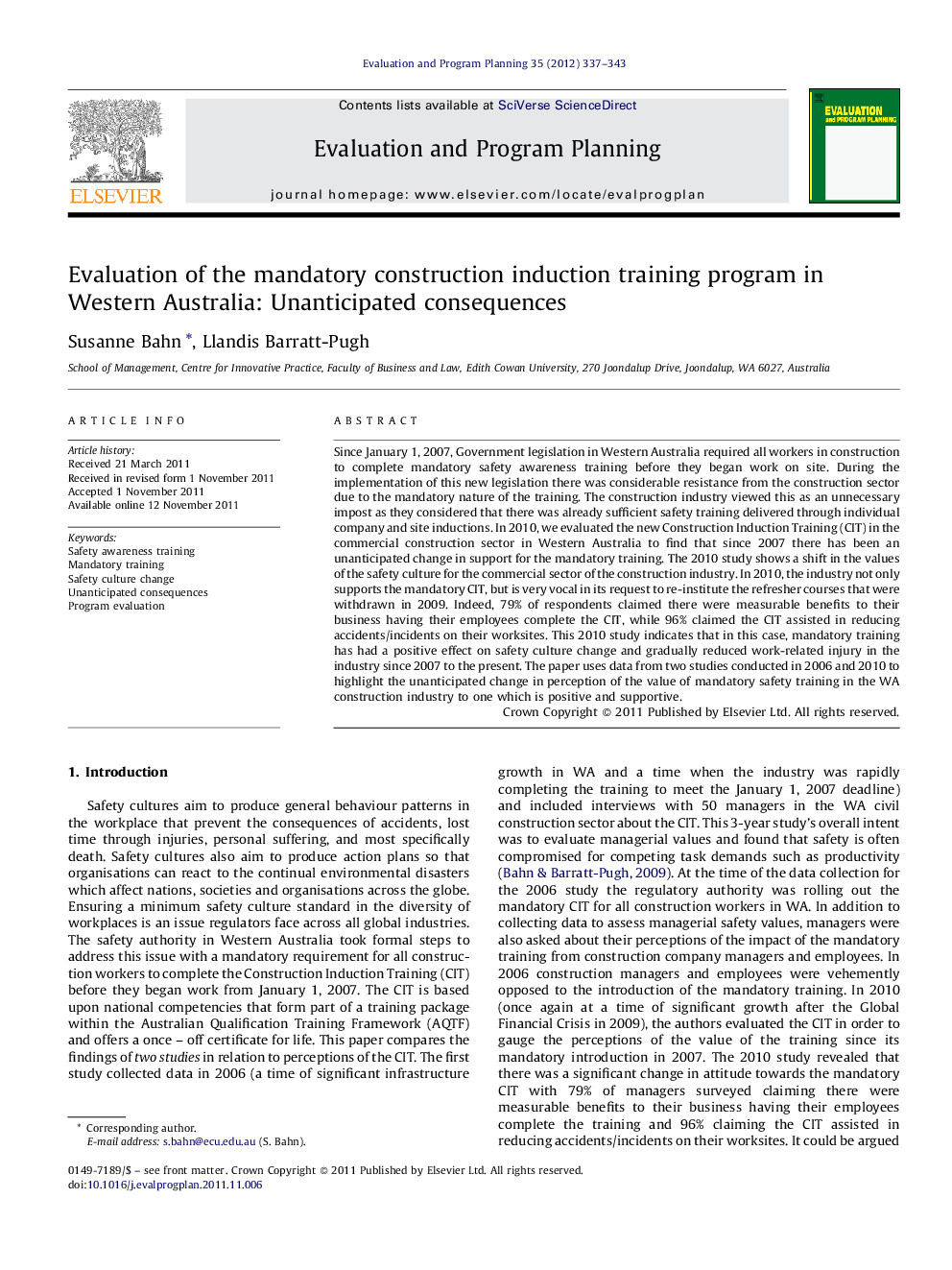| Article ID | Journal | Published Year | Pages | File Type |
|---|---|---|---|---|
| 322280 | Evaluation and Program Planning | 2012 | 7 Pages |
Since January 1, 2007, Government legislation in Western Australia required all workers in construction to complete mandatory safety awareness training before they began work on site. During the implementation of this new legislation there was considerable resistance from the construction sector due to the mandatory nature of the training. The construction industry viewed this as an unnecessary impost as they considered that there was already sufficient safety training delivered through individual company and site inductions. In 2010, we evaluated the new Construction Induction Training (CIT) in the commercial construction sector in Western Australia to find that since 2007 there has been an unanticipated change in support for the mandatory training. The 2010 study shows a shift in the values of the safety culture for the commercial sector of the construction industry. In 2010, the industry not only supports the mandatory CIT, but is very vocal in its request to re-institute the refresher courses that were withdrawn in 2009. Indeed, 79% of respondents claimed there were measurable benefits to their business having their employees complete the CIT, while 96% claimed the CIT assisted in reducing accidents/incidents on their worksites. This 2010 study indicates that in this case, mandatory training has had a positive effect on safety culture change and gradually reduced work-related injury in the industry since 2007 to the present. The paper uses data from two studies conducted in 2006 and 2010 to highlight the unanticipated change in perception of the value of mandatory safety training in the WA construction industry to one which is positive and supportive.
► In this study we present the use of artefact mediated interviews to draw out responses from uncommunicative participants. ► We pictures of worksites as a tool for these interviews. ► We found that the use of both abstract and concrete images within an artefact-mediated interview can produce diverse and enriched forms of data.
